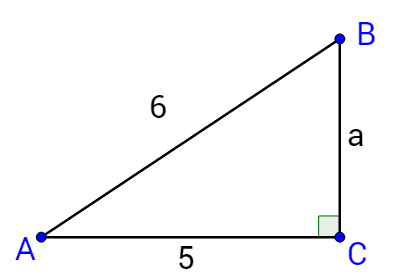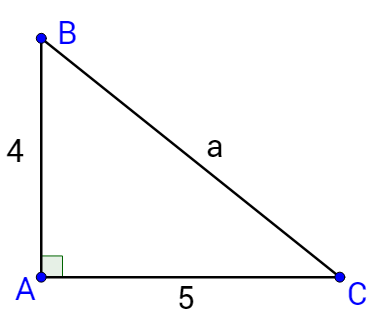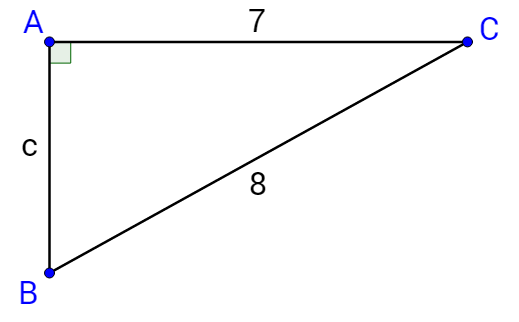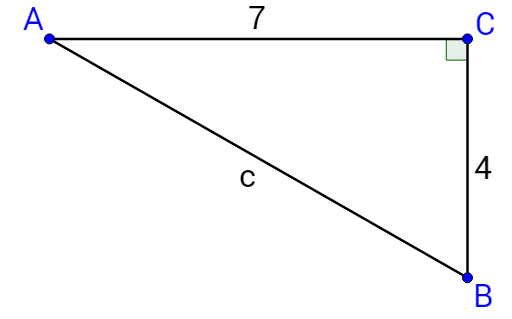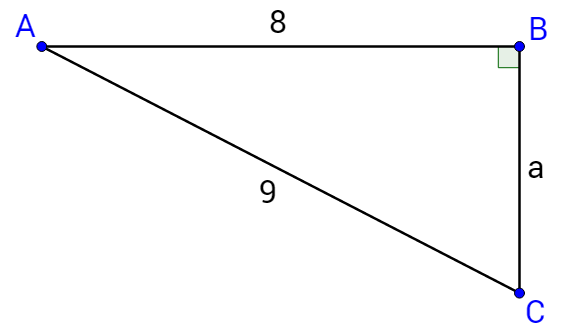Precalculus by Richard Wright
Precalculus by Richard Wright
At that time people will see the Son of Man coming in clouds with great power and glory. Mark 13:26 NIV
Summary: In this section, you will:
SDA NAD Content Standards (2018): PC.7.3
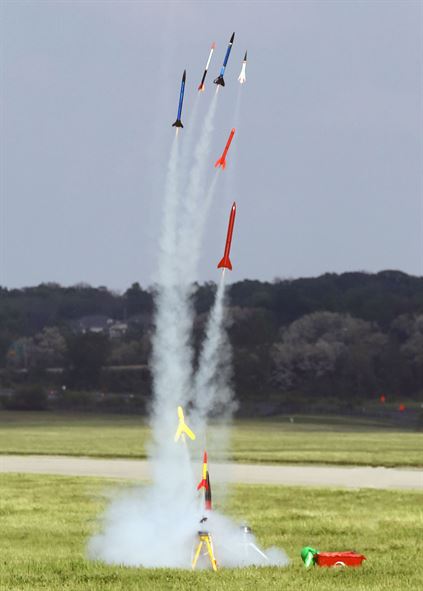
Right triangles can be used to solve many problems. One example is calculating the angle a camera would have to be set at to capture a model rocket at its apogee, or highest altitude.
For problems that can be solved with right triangle trigonometry, draw a triangle as described in the problem. Then use trigonometry to solve for the unknown.
It is estimated that a certain model rocket will reach an altitude of 200 ft. A photographer is setting up a camera 50 ft away from the launch pad. At what angle should he set the tripod to get a picture at the maximum altitude?
Solution
Draw a right triangle to model the problem.
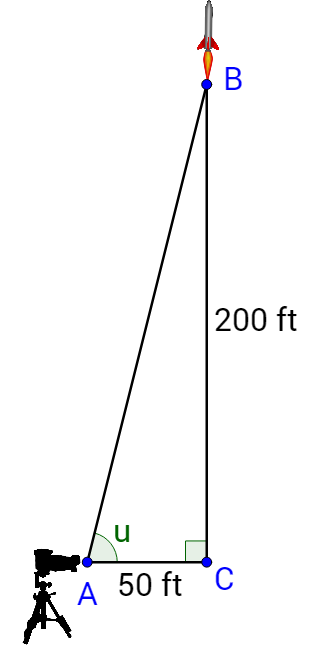
The hypotenuse and the angle with the ground are known. The opposite side is the unknown. Use sine to solve the problem.
\(\tan u = \frac{opp}{adj}\)
\(\tan u = \frac{200 \textrm{ ft}}{50 \textrm{ ft}}\)
\(u = \tan^{−1} \left(\frac{200}{50} \right) \approx 76.0°\)
If a boat is tied to a pier 10 ft below the deck of the boat with a rope that is 15 ft long, what angle does it make with the dock?
Answer
41.8°
In areas that get a lot of snow, roofs must be inclined at a certain angle to meet building code. That way the snow will slide off the roof and not crush the house. In one town the incline must be at least 20° above the horizontal. A builder is making a roof with a rise of 4 feet for every 12 feet of run. Will this roof meet building code?
Solution
Draw a right triangle to represent the roof.
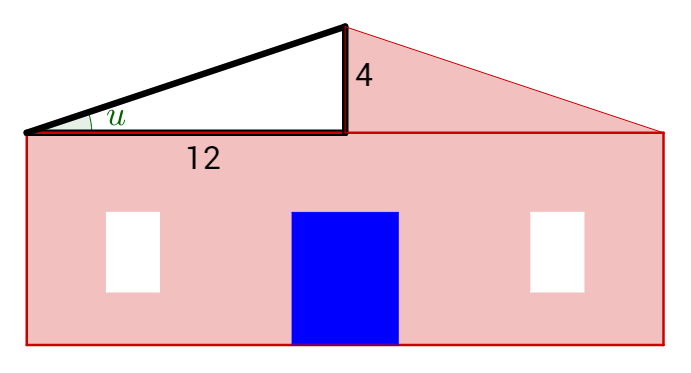
The opposite side is 4 ft and the adjacent side is 12 ft. Tangent has this ratio.
\(\tan u = \frac{4 \textrm{ ft}}{12 \textrm{ ft}}\)
\(u = \tan^{–1} \frac{4}{12} \approx 18.4°\)
This is less than the required 20°, so the roof is not steep enough and will not meet building code.
A bird is sitting on top of a 10 m high tower that is 15 m away from an avid birder. What angle should the birder use to aim his small telescope to see the bird?
Answer
33.7°
Solving a triangle means finding the measures of all unknown sides and angles. To do this use the trigonometric functions and inverse functions, the Pythagorean theorem, and the triangle sum theorem. The triangle sum theorem states that the sum of the angles of a triangle equal 180°.
Find the lengths of all the sides and angles using
The sides are labeled with a lowercase letter to match the opposite angle.
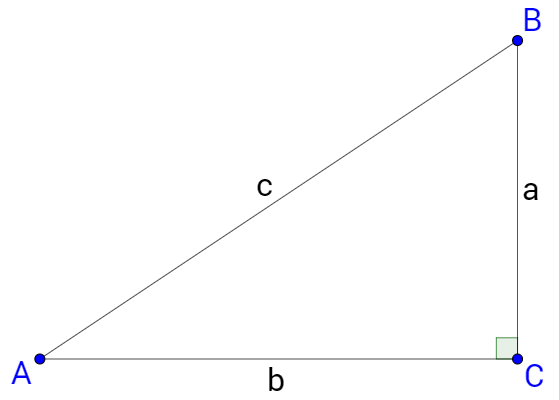
Solve the triangle.
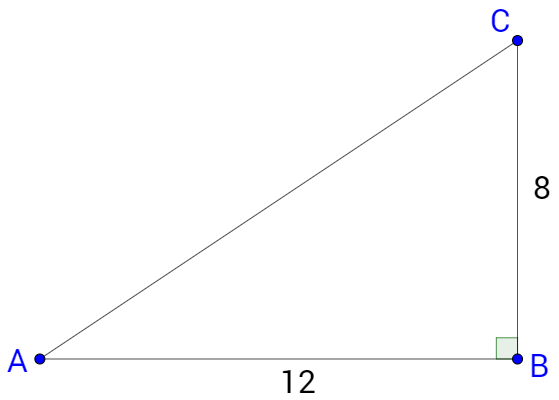
Solution
Since two sides are known, start by finding the third side using the Pythagorean theorem with the hypotenuse, b.
b2 = 82 + 122
b2 = 208
\(b = 4\sqrt{13}\)
Now find the angles. Because the side lengths are known, inverse trigonometric functions should be used.
\(A = \tan^{-1} \frac{8}{12}\)
A ≈ 33.7°
Angle C can be found using either inverse tangent or the triangle sum theorem.
A + B + C = 180°
33.7° + 90° + C = 180°
C ≈ 56.3°
Solve the triangle.
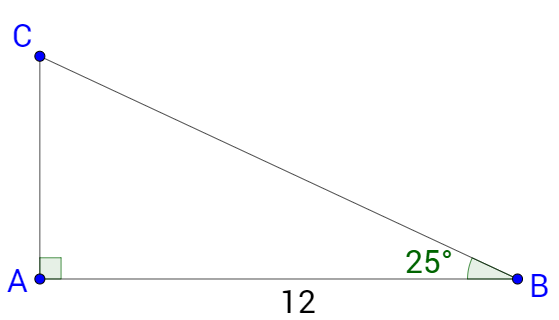
Answer
a ≈ 13.2, b ≈ 5.6, C = 65°
Find the lengths of all the sides and angles using
The sides are labeled with a lowercase letter to match the opposite angle.

Helpful videos about this lesson.
